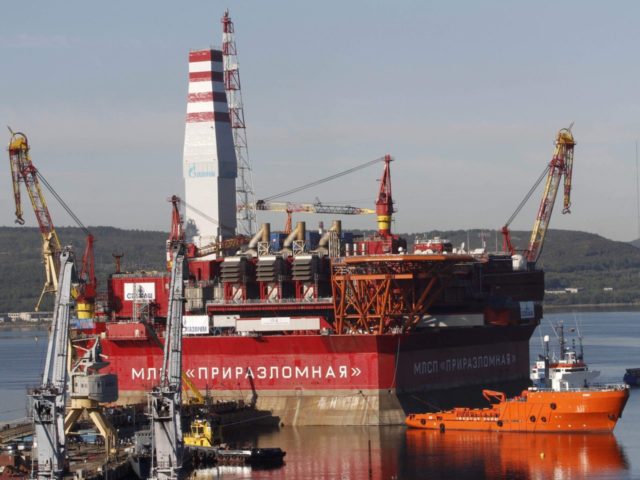Virtually unreported in the financial press, Russia’s “Arctic Surge” of new oil and gas production will increasingly make Middle East oil production irrelevant.
Secretary of State Hillary Clinton infamously said on the eve of the 2012 presidential election, “The United States must look past the violence and extremism that has erupted after the Arab Spring revolutions and boost support for the region’s young democracies to forge long-term security.”
Since then, the Middle East has imploded, as ISIS conquered over half of Syria and Iraq; Libya fell into civil war; terrorist attacks spread to Europe and the United States; and Turkey just suffered what it is calling a foreign-sponsored military coup de tat.
All of this instability historically would have caused oil prices to spike spectacularly higher and trash the U.S. economy. But the dramatic increase of U.S. “oil and other production” to 14.4 million barrels in June kept oil prices down to the mid-$40 range.
Saudi Arabia has increased oil pumping with the hope of bankrupting the U.S. fracking industry and driving prices back up. But to the Saudis’ horror, any reduction in U.S. production is being offset by Russia’s growing “Arctic Surge” development.
Lukoil’s Kharyaga prospect on Russia’s Barents Sea started producing and exporting crude in 2008. Shipments are at 40,000 barrels per day, and will hit 230,000 barrels a day by 2020.
Gazprom Neft’s offshore Prirazlomnoye field began initial production in December 2013, with year-round exports starting in late 2015. Production of medium gravity crude is now about 35,000 barrels per day, and should reach full production of 110,000 barrels a day by 2020.
In May, President Vladimir Putin inaugurated new production at the neighboring Novoportovskoye field, which is expected to rise from 25,000 barrels today, to about 125,000 barrels a day by 2019, and to 170,000 thereafter.
Russian Arctic production will soon exceed the 240,000 barrels a day coming out of Libyan ports. But these numbers would be much higher if Exxon, Rosneft’s foreign partner in the Trebs and Titov fields in the Kara Sea, had not been forced by Western sanctions to walk away in 2014 (after investing $700 million).
Production at Trebs and Titov is currently 45,000 barrels a day of light-sweet-crude. Output is expected to reach a peak of around 200,000 barrels a day by 2020. But that is without starting production from Exxon’s potentially huge discovery at the adjacent Universitetskaya-1. That single prospect is estimated to hold at least 750 million barrels of light oil, and 338 billion cubic meters of natural gas.
Despite Russia’s limited funds, the Arctic wells could contribute 425,000 barrels a day to Russia’s oil output by 2020. Although that amounts to only 4 percent of Russia’s 11 million barrels a day of current production of almost 11 million barrels a day, it assures Russia’s output will not fall in the future.
Russia hopes to invest $400 billion in the Arctic project over the next 15 years to drive up production to 3 million barrels a day.
Eventually, the Western sanctions will be lifted, and Exxon Mobile’s deep pockets will return to accelerate the “Arctic Surge.”

COMMENTS
Please let us know if you're having issues with commenting.